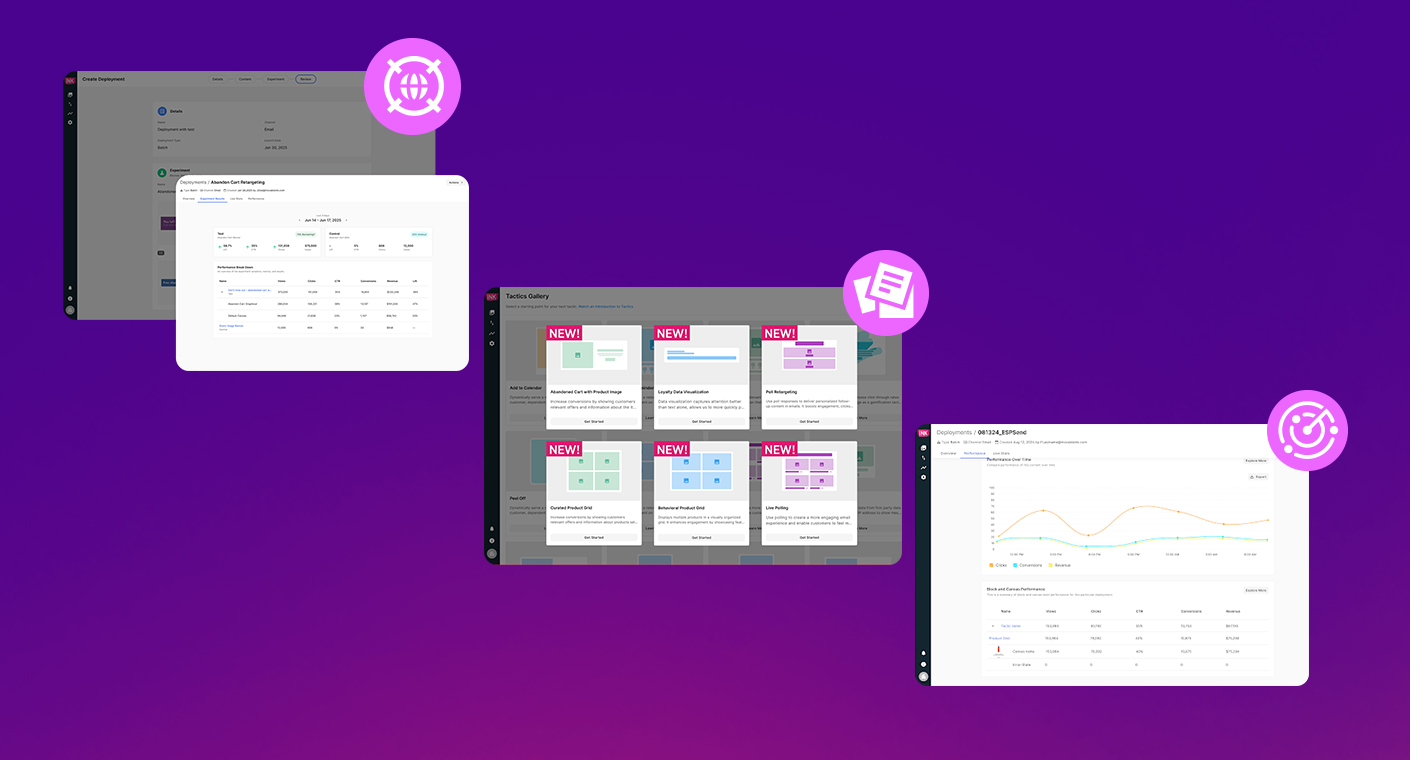How Can You Deliver Data-Driven Personalization?
In today's competitive market, delivering hyper-relevant content is critical to giving customers the experiences they expect—which (hint) is also how you improve your top and bottom line. In fact, according to McKinsey, companies that leverage data-driven content personalization can see revenue increase by more than 400% when compared to organizations that struggle to activate their data.
Yet despite the tremendous potential return, many organizations find themselves in that second category, with 77% stating that they struggle to activate “most, if not all” of the customer data they collect. Worse still, Gartner predicts that by 2025 75% of marketing programs leveraging customer data for content and creative personalization won’t be able to justify the costs to acquire, manage, and activate it—if they don’t find a more efficient and effective way of producing that incremental revenue.
So how do you avoid those potential pitfalls and start delivering data-driven personalization at scale? You need to answer these three critical questions.
Step 1: What Data Do You Need?
More data does not necessarily equal more success. Rather than only focusing on increasing your data sourcing, you need to start from the end result and work backwards. Ask yourself, “To deliver the type of experience my customer wants, what data points am I going to need?” Capturing and activating that data then becomes mission-critical. So, what types of data should you consider first?
- Contextual Data: This is data you can use to personalize content for someone–without even knowing who that person is. This includes date, time, and weather for the targeted location, along with language preferences, device types and/or mobile carrier.
- Customer Data: This includes the zero- and first-party data you have already captured for an individual customer. Types of data points to look out for are a customer’s name, birthday, loyalty status, tenure, product/category preferences, or purchase history.
- Behavioral Data: This broad category of data that reflects how a customer is engaging and interacting with your brand:
- Clicks on email and mobile content
- Browsing history
- Items and categories searched, viewed, purchased, or returned
- Items added to favorites or abandoned/removed from cart
- Mobile app downloads or logins
- Loyalty points earned
- Applications started or videos viewed
- Business Data: This non-consumer level data can be used to increase relevancy and drive urgency, such as:
- Product SKUs and descriptions
- Product inventory status
- Social proofing information—live view counts, reviews, and ratings
- Store hours, locations, and in-store events
Step 2: How Do You Transfer Data?
Does real-time data really matter? For some data points, absolutely! That’s where API utilization shines. For others, not so much, making CSV data the best choice. Understanding this nuance can make the difference between delivering a relevant, in-the-moment experience versus one that alienates them with outdated content or inaccurate information.
- When to use a CSV: CSVs are ideal for transferring data that’s not overly complex and doesn’t change frequently, since the marketing experience will only reflect information from the time of the last file transfer. Consider this for Customer and Business Data.
- When to use an API: APIs are a way to quickly and securely connect two systems together so that data can be instantly shared between them. Using an API is great for use cases where it is critical to have up-to-date information, as these experiences will reflect information that is accurate at the time the API is called (during image rendering). Consider this for Contextual and Behavioral Data.
For most use cases, Movable Ink clients can leverage our Customer Data API, connect existing systems to Movable Ink via any public or private API, or use one of our numerous pre-built integrations with industry-leading vendors to make the most of their data.
But what if you don't have all of the data you need, or simply prefer Movable Ink to capture it for you? We’ve got you covered. Using Movable Ink’s Behavioral Tracking Script or Mobile SDK, we can natively collect behavioral data for you. Plus, Movable Ink offers multiple ways to increase your zero-party data with interactive content like progressive polling or form submissions.
Step 3: What Do You Do With The Data?
Collecting the data is only half the battle. The real value comes from activating and transforming that data into personalized content for each customer. So, how can Movable Ink help you do that?
Leverage Data to Improve the Accuracy and Specificity of Your Targeting Logic
One of the easiest and best ways to ensure customers receive relevant content is to use business rules to help determine what they see.
For example, if you ran a coffee shop, you could define situations such as, “If the temperature is below 32 degrees in the customer’s current location, show a background image of someone drinking a hot coffee in front of a snow-covered mountain.” Whereas if the temperature is above 80 degrees, you can ensure a background image of someone drinking iced coffee by a pool is displayed.
While this is one basic example, the possibilities are endless—and as long as you have the data to define these variations, you are only limited by your imagination.
Leverage Data as a Layer in Your Unique Composite Images
The second way you can activate data within Movable Ink is to enhance the quality of the creative itself. For instance, rather than showing a generic product image, you could swap in an image of the actual item a customer abandoned in their cart.
Plus, you can add in additional items to increase relevancy and drive urgency, such as displaying real-time pricing, inventory status, ratings and reviews, live maps, or visualizations that show the impact a purchase would have on their loyalty tier.
Don’t Delay Your Data-Activated Personalization
Every day that you wait to start your journey to data-driven personalization is a day your competition gets further ahead. Movable Ink’s Universal Data Activation capabilities provide all the flexibility you need to capture, access, transform, and activate your data into hyper-relevant experiences for every customer across every channel.
Need more inspiration? Check out our Universal Data Activation eBook to see how our clients are using these capabilities to transform their marketing programs today!








